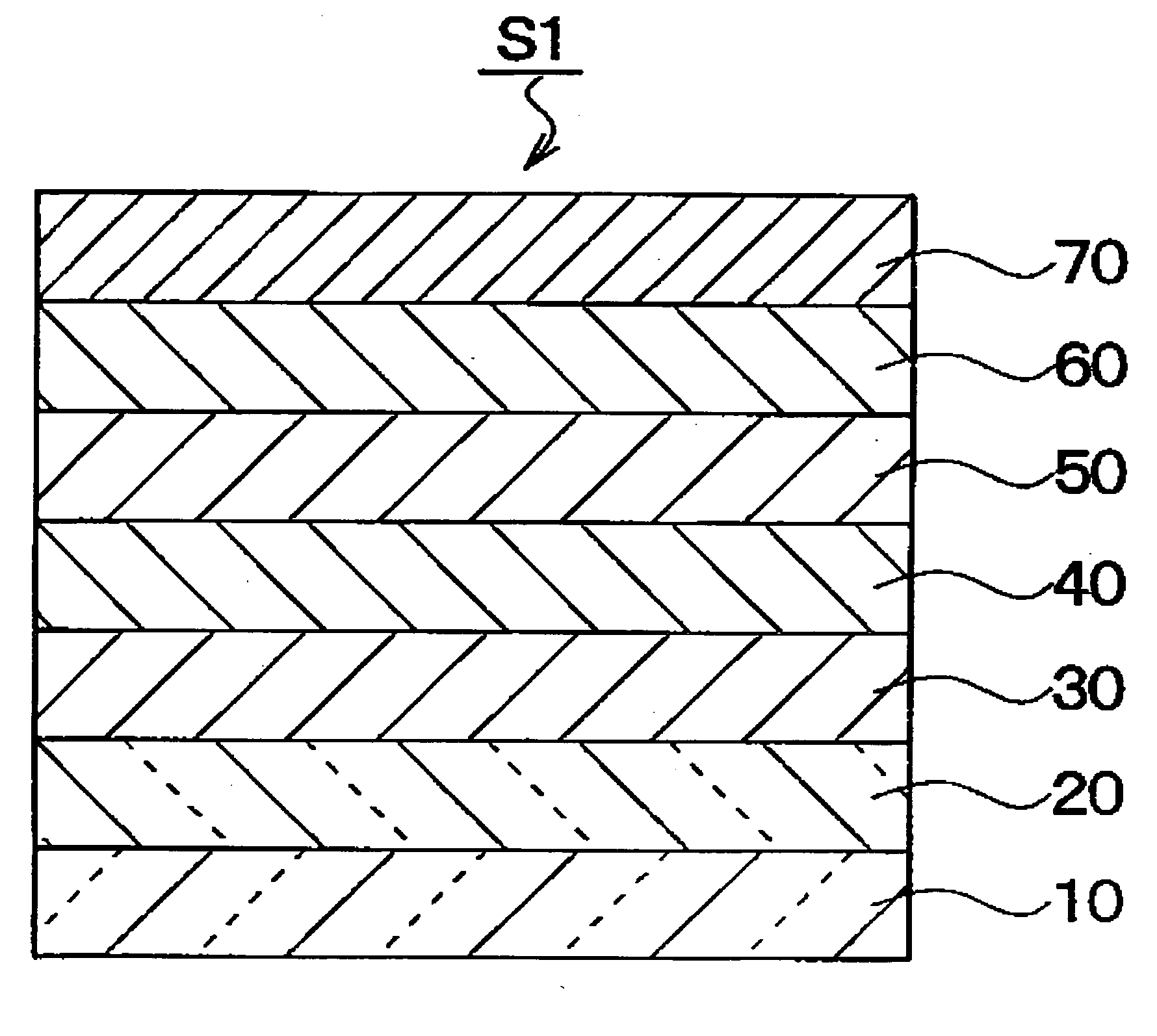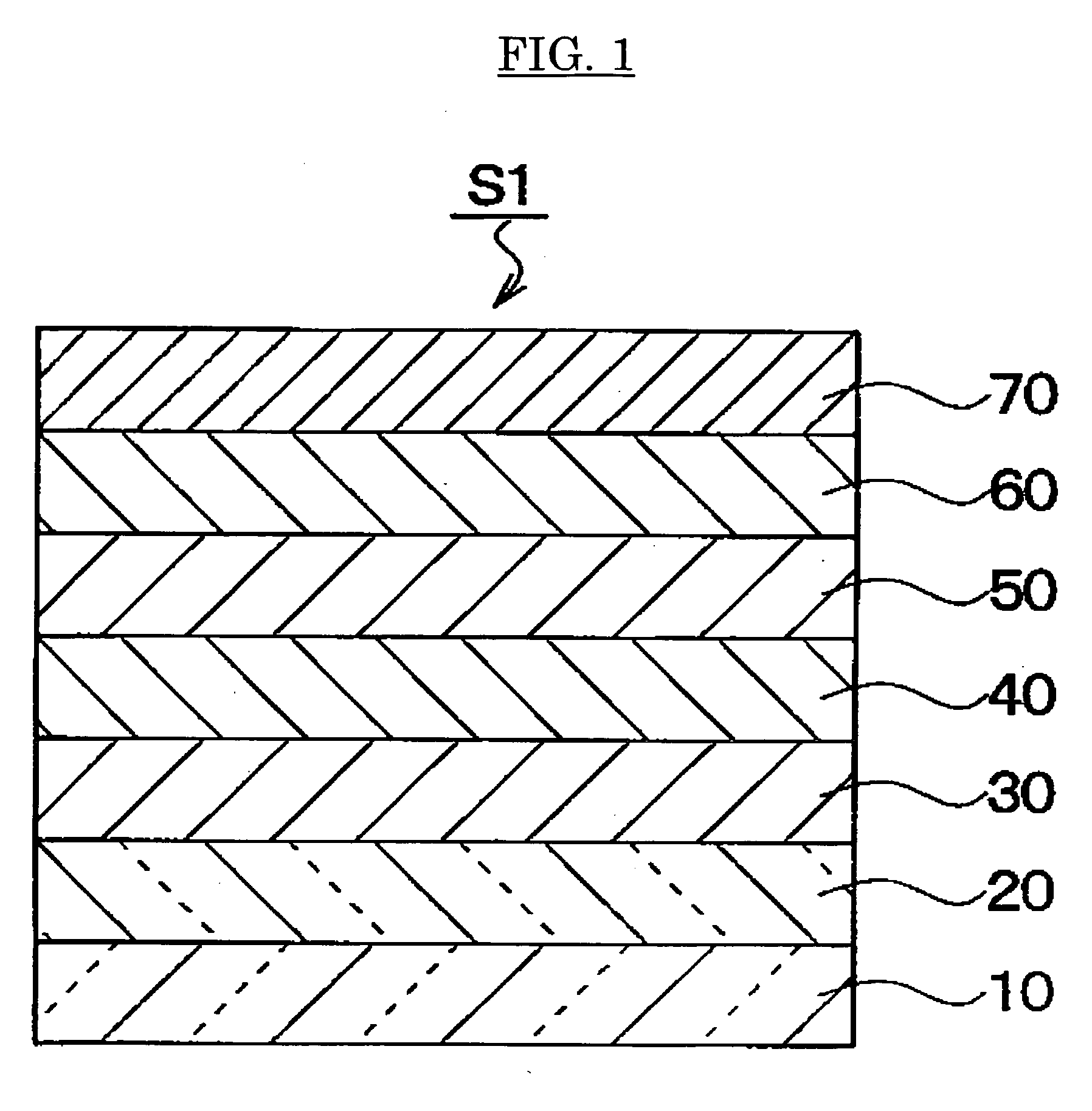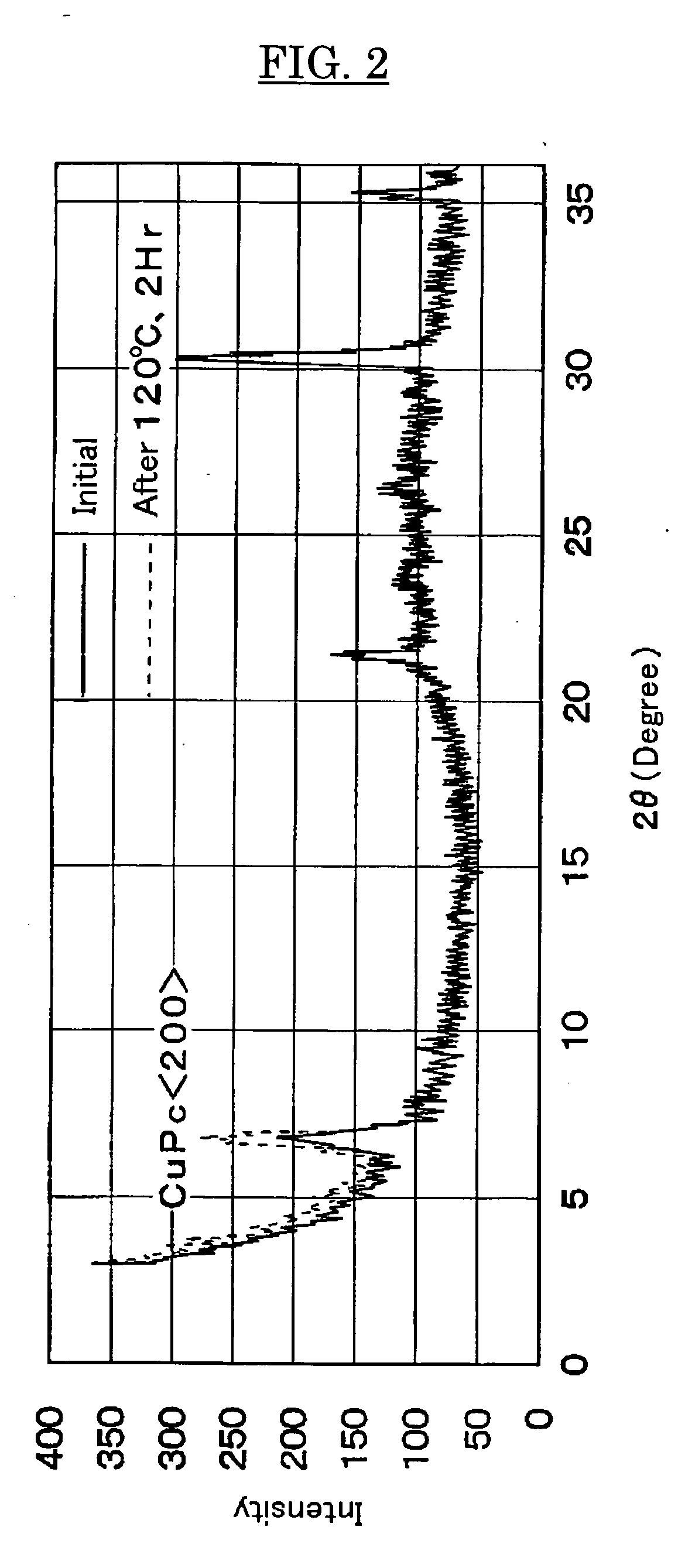Organic electroluminescent device
a technology of electroluminescent devices and organic materials, which is applied in the direction of discharge tube luminescnet screens, other domestic articles, organic chemistry, etc., can solve the problems of unsuitable compact equipment, low power consumption, and inability to receive clear information, so as to reduce the adhesiveness of cupc membranes, improve crystallinity, and enhance interfacial adhesiveness to anodes
- Summary
- Abstract
- Description
- Claims
- Application Information
AI Technical Summary
Benefits of technology
Problems solved by technology
Method used
Image
Examples
example 1
[0147] The anode 20 of ITO, thickness of 150 nm, is formed on the substrate 10 of glass by the spattering method. After patterning, the surface of ITO is smoothed by grinding: The mean height of surface roughness profile (Ra) of ITO is preferably to be 2 nm or less, while its ten point mean height of surface roughness profile (Rz) is to be 20 nm or less. This example uses an ITO where the surface has been ground to an Ra of about 1 nm or less and an Rz of about 10 nm.
[0148] On the anode 20 is formed the hole injection layer 30 of copper phthalocyanine, thickness of 15 nm, by the vacuum vapor deposition method. Further, the hole transportation layer 40 of triphenylamine tetramer represented by Chemical Formula 10, thickness of 40 nm, is formed by the vacuum vapor deposition method.
[0149] Thereafter, formed is the luminescent layer 50, thickness of 40 nm, which consists of 2% by mass of the coumarin derivative 1 represented by the above Chemical Formula 7 as dopant, 49% by mass of ...
example 2
[0152] A green light-emitting device was obtained similarly as in Example 1, except that it used the luminescent layer 50, thickness of 40 nm, which consists of 2% by mass of the coumarin derivative 1 represented by the Chemical Formula 7 as dopant, 94% by mass of Alq3 as host material, and 4% by mass of triphenylamine tetramer. The chromaticity was (0.28, 0.62) on the chromaticity diagram established by CIE.
[0153] The brightness half life was 1,500 hours when the device was continuously allowed to emit luminescence at 85° C. and 400 Cd / m2 in 1 / 64 duty driving mode. As described above, this Example attained an organic EL device which had an enhanced durability at elevated temperature and consistently emitted a visible light in the green region over a long period of time even when driven under elevated temperature conditions.
[0154] Further, in this Example an organic EL device superior in durability to that in Example 1 was attained because the mixing ratio against host in the lumi...
example 3
[0157] A green light-emitting device was obtained similarly as in Example 1 except that it used the luminescent layer 50, thickness of 40 nm, which consists of 1% by mass of the coumarin derivative 2 represented by the Chemical Formula 8 as dopant, 74% by mass of Alq3 as host material, and 25% by mass of triphenylamine tetramer. The chromaticity was (0.27, 0.60) on the chromaticity diagram established by CIE.
[0158] The brightness half life was 1,000 hours when the device was continuously allowed to emit luminescence at 85° C. and 400 Cd / m2 in 1 / 64 duty driving mode. As described above, this Example attained an organic EL device which had an enhanced durability at elevated temperature and consistently emitted a visible light in the green region over a long period of time even when driven under elevated temperature conditions.
PUM
| Property | Measurement | Unit |
|---|---|---|
| Temperature | aaaaa | aaaaa |
| Temperature | aaaaa | aaaaa |
| Fraction | aaaaa | aaaaa |
Abstract
Description
Claims
Application Information
 Login to View More
Login to View More - R&D
- Intellectual Property
- Life Sciences
- Materials
- Tech Scout
- Unparalleled Data Quality
- Higher Quality Content
- 60% Fewer Hallucinations
Browse by: Latest US Patents, China's latest patents, Technical Efficacy Thesaurus, Application Domain, Technology Topic, Popular Technical Reports.
© 2025 PatSnap. All rights reserved.Legal|Privacy policy|Modern Slavery Act Transparency Statement|Sitemap|About US| Contact US: help@patsnap.com



